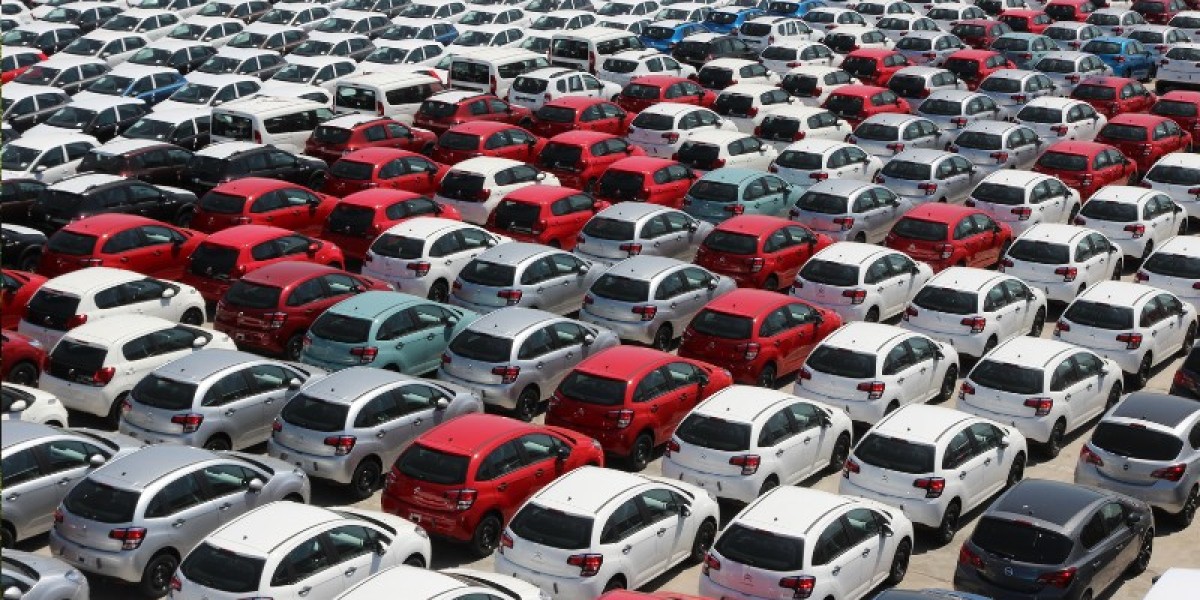The Australia used car market, valued at approximately AUD 65.96 billion in 2023, is poised for remarkable growth in the coming years. The market is expected to grow at a compound annual growth rate (CAGR) of 5.50% from 2024 to 2032, potentially reaching AUD 106.80 billion by the end of the forecast period. This expansion is being driven by various key factors, including an increase in the use of peer-to-peer distribution channels, growing consumer demand for cost-effective automobiles, and a notable shift in preferences towards modern yet affordable vehicles among younger buyers, particularly school-going graduates. Let's take a deeper look into the dynamics fueling the growth of the used car market in Australia and what lies ahead for the industry.
Key Drivers Behind the Growth of Australia's Used Car Market
Increasing Wait Times for New Cars: The global supply chain disruptions and the ongoing microchip shortages have significantly impacted the production of new vehicles, resulting in longer wait times for consumers. This situation has encouraged more Australians to turn to the used car market, where the availability is less dependent on manufacturing cycles. Consumers are increasingly opting for used cars as a quicker, more accessible option to meet their transportation needs.
Rising Consumer Preference for Cost-Effective Models: Amidst rising living costs and financial uncertainties, consumers are becoming more inclined toward purchasing cost-effective vehicles. Used cars offer a more affordable option compared to new cars, particularly in a market where inflation is influencing spending habits. Used cars are seen as excellent value propositions due to their lower purchase price and relatively stable insurance rates compared to new vehicles.
Proliferation of Peer-to-Peer Distribution Channels: One of the most significant factors propelling the growth of the used car market is the expansion of peer-to-peer (P2P) distribution channels. With the advent of online car marketplaces and digital platforms, consumers now have greater access to private sellers and can engage directly in car transactions. This has reduced the dependency on traditional dealerships, enabling consumers to explore more competitive pricing options and a wider range of vehicles. P2P platforms like CarSales, Drive, and CarsGuide have allowed both buyers and sellers to connect effortlessly, driving the market's growth.
Increased Demand from School-Going Graduates and Young Buyers: Another critical factor driving the used car market is the rising demand from school-going graduates and young professionals who are entering the workforce and looking for their first vehicles. These younger buyers are often budget-conscious but prefer to own modern and reliable cars. Used pickups and sedans are particularly popular due to their affordability and suitability for daily commuting and leisure activities. Many young Australians are choosing used cars for their low upfront cost, which offers greater value than purchasing new models.
Improving Quality of Pre-Owned Vehicles: The quality of used cars has improved considerably over the years. Thanks to advancements in car maintenance and servicing technologies, many vehicles remain in good condition even after years of use. Certified pre-owned programs offered by dealerships and P2P platforms ensure that buyers receive vehicles that meet specific quality standards. As a result, more consumers are willing to invest in used cars, knowing that they are purchasing reliable vehicles with a good track record.
Emerging Trends in the Australian Used Car Market
Electric and Hybrid Used Car Demand: As Australians become increasingly environmentally conscious, there has been a growing demand for electric vehicles (EVs) and hybrid cars in the used car market. Although these vehicles were initially more expensive, the introduction of used electric and hybrid cars allows budget-conscious buyers to enjoy the environmental benefits of EVs at a reduced cost. With government incentives for electric vehicles continuing to evolve, it is anticipated that more used EVs will enter the market, further driving the shift toward sustainable transportation.
Technology-Driven Vehicle Purchasing: With the rise of the digital economy, more Australians are opting to purchase vehicles through online channels. The convenience of online browsing, reviewing, and purchasing used cars has become an essential part of the buying experience. Digital platforms not only enable car comparisons and price transparency but also allow for virtual test drives and online documentation, streamlining the entire purchase process. As a result, consumers are becoming more confident in purchasing vehicles without the need for physical visits to dealerships.
Financing Options for Used Cars: As the demand for used cars increases, financial institutions are responding by offering more accessible financing options tailored to used car buyers. Used car financing is becoming more flexible, with various lenders offering loan terms that suit the budget of everyday Australians. This trend has also made used car ownership more accessible, especially for younger consumers and first-time buyers, who can now secure loans at competitive rates.
Vehicle Certification and Transparency: In response to growing consumer concerns about vehicle history and reliability, the market is seeing an increase in certified pre-owned vehicles (CPOVs). Many dealerships are offering vehicles that have undergone thorough inspections and come with extended warranties. Additionally, car buyers can now access detailed vehicle history reports, giving them greater transparency and peace of mind about their purchases.
Factors Influencing Used Car Pricing
Vehicle Depreciation: One of the primary factors that influence the pricing of used cars is depreciation. Unlike new vehicles that experience rapid depreciation, used cars typically depreciate at a slower rate, making them more appealing to buyers looking for better value for their money. As new vehicle prices increase due to supply chain issues and inflation, the value of used cars, particularly late-model vehicles, may see slower depreciation, which boosts their attractiveness as an investment.
Consumer Preferences for Fuel-Efficiency: With rising fuel prices, many Australian consumers are prioritizing fuel-efficient vehicles. Used cars that offer better fuel economy are often in high demand, especially compact cars, hybrids, and smaller sedans. This trend is expected to continue as fuel costs remain a significant factor influencing the overall cost of car ownership.
Insurance and Maintenance Costs: Insurance premiums and maintenance costs for used cars are often lower compared to new vehicles. This is another reason why consumers prefer used cars, as these cost savings make the total cost of ownership more manageable. As maintenance and repair technologies have improved, used cars are now more reliable, which also helps to lower the overall cost of ownership.
Impact of Environmental Policies on the Used Car Market
Australia’s environmental policies have a significant impact on the types of vehicles consumers choose. With a growing emphasis on sustainable transport, policies encouraging electric vehicle (EV) adoption may also influence the used car market.
Government Incentives for Electric Vehicles (EVs): Federal and state governments have introduced various incentives for electric and hybrid vehicles. As the second-hand market for EVs expands, used car buyers are likely to benefit from lower prices for these eco-friendly vehicles as they become more widely available. Moreover, as environmental regulations tighten, consumers may increasingly seek used vehicles with lower emissions.
Carbon Footprint Considerations: Growing awareness of the environmental impact of traditional fuel-powered vehicles is pushing many Australians toward eco-friendly options, even in the used car market. As green transport solutions become more integrated into Australia's regulatory landscape, there may be increased demand for used low-emission and electric vehicles, further driving the diversification of the used car market.
Rising Role of Online Used Car Platforms
Online platforms have become central to how consumers in Australia purchase used cars. Digital transformation in the automotive industry has led to an increase in online marketplaces, offering the following benefits:
Virtual Showrooms: Online platforms such as CarSales, Drive, and Gumtree now offer virtual showrooms that allow customers to browse, inspect, and even purchase vehicles from the comfort of their own homes. Features like 360-degree views, detailed vehicle history, and price comparisons are now standard, giving customers more confidence in their purchases.
Digital Car Auctions: Another growing trend in the used car market is digital car auctions. Platforms like Manheim and Copart offer an online space where buyers can bid on used cars from the convenience of their homes. These digital auctions are especially popular among car dealers and offer them access to a large inventory of vehicles.
Advanced Filtering and Personalization: The rise of data-driven marketing on these platforms has enabled consumers to easily filter and search for cars based on specific features like model, price range, fuel type, and more. The use of machine learning algorithms can also suggest the best deals based on consumer preferences, driving further engagement and simplifying the buying process.
Outlook for the Future: Growth Projections (2024-2032)
With the market expanding rapidly and an estimated CAGR of 5.50%, the Australia used car market is set to reach a value of approximately AUD 106.80 billion by 2032. Several factors, including the growing influence of digital platforms, the shift toward more affordable and sustainable vehicles, and the increased participation of younger consumers in the market, will continue to fuel this growth trajectory.









